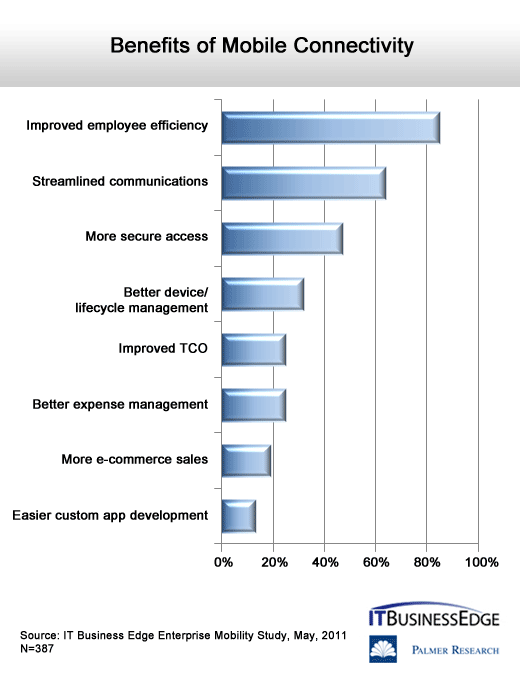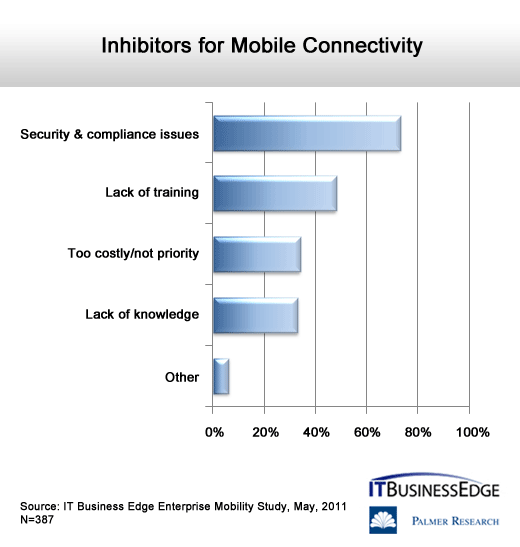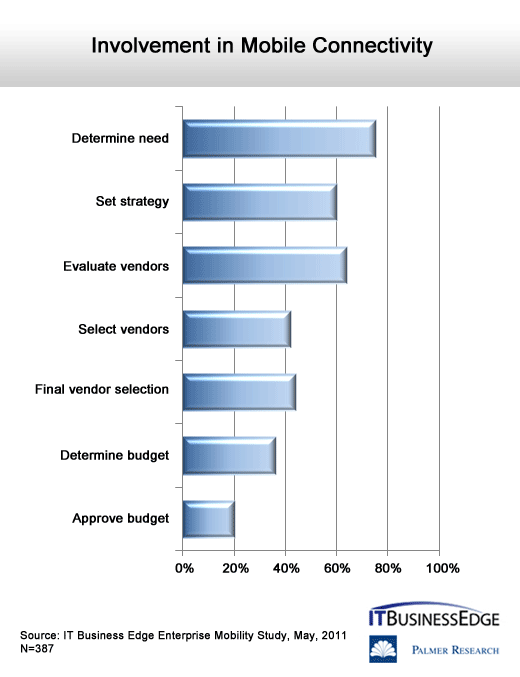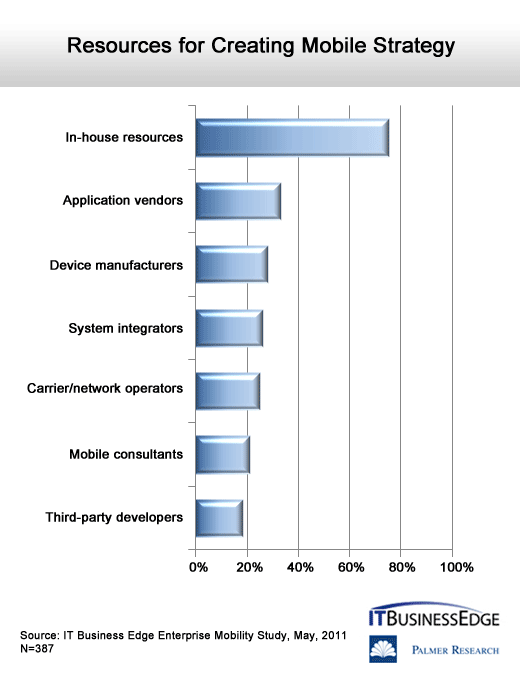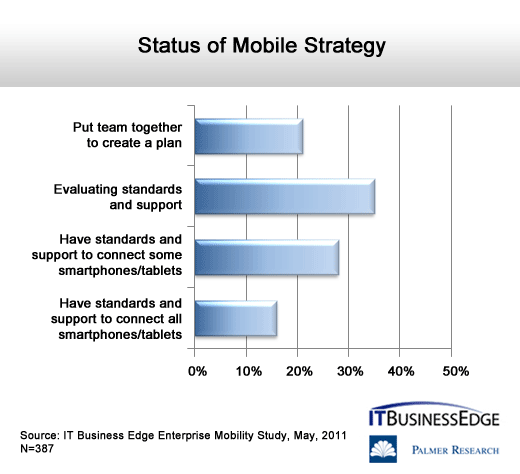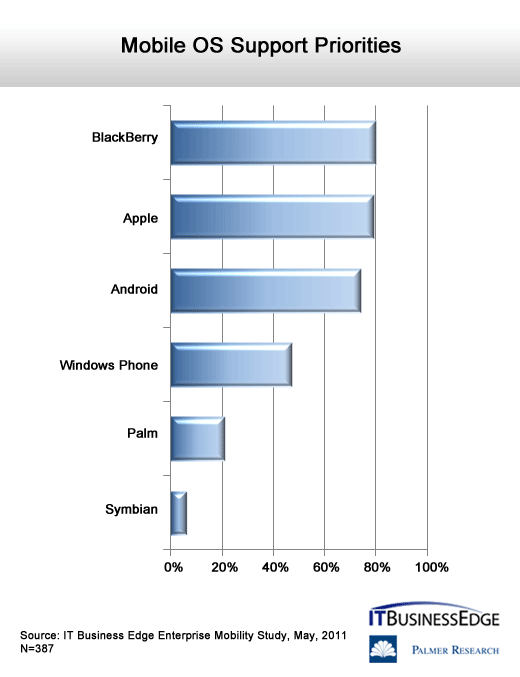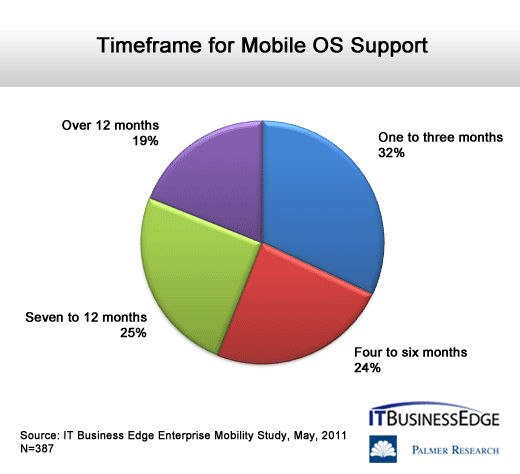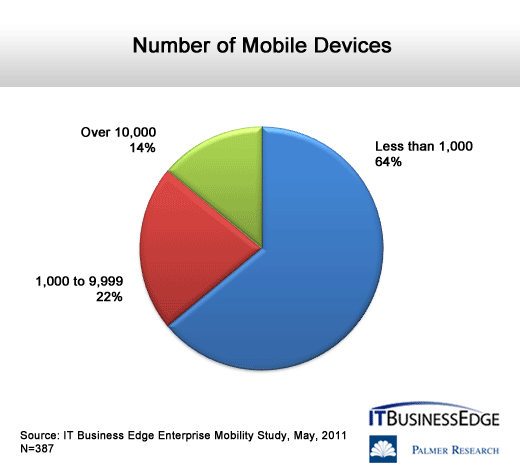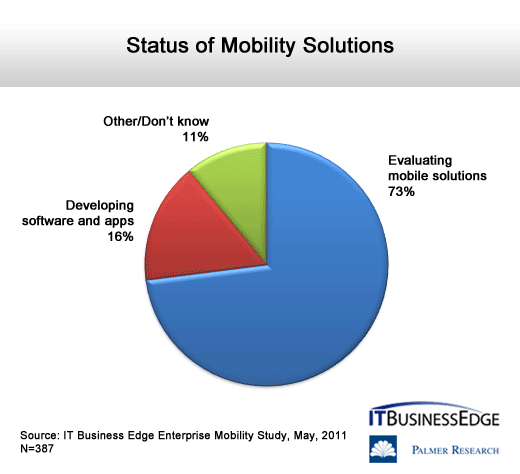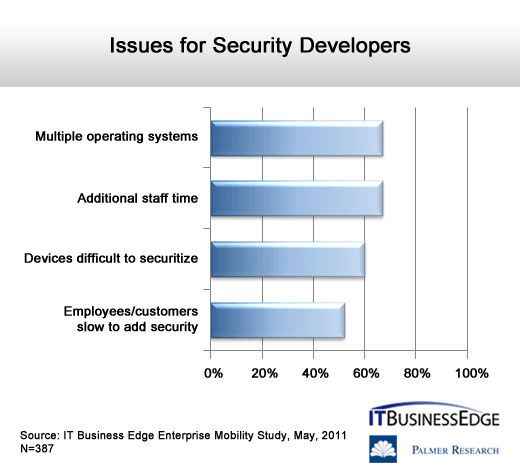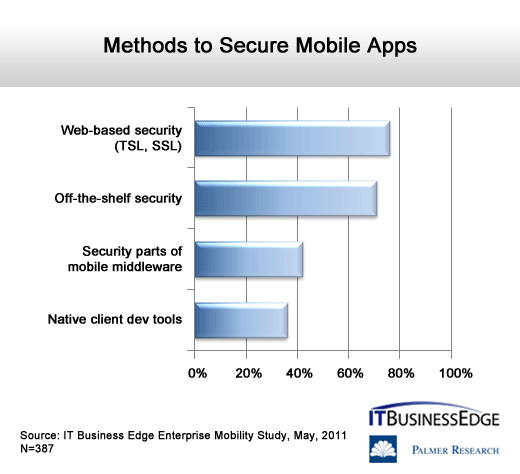In a May 2011 survey of IT Business Edge members, conducted by Palmer Research, 85 percent of respondents cite improved employee efficiency as one of the most important benefits of mobile device connectivity, and 64 percent cite streamlined communications. Even with mobile connectivity high on their radar, though, fewer than 50 percent have set standards and support for some or all mobile devices in their organizations. For those who are developing a formal support structure, the average timeframe for completion is under 12 months for over 80 percent of respondents.
These organizations are planning to connect an average of 19,100 smartphones and/or tablets in the next 12 months, which creates an opportunity for even higher employee productivity. That is, if employees are able to access the necessary enterprise software. A recent IFS study conducted among manufacturing executives and professionals of middle market to large manufacturers found that while many respondents viewed the mobile interface as an important consideration in enterprise software selection, few respondents actually have access from their mobile device.
Click through for results from an enterprise mobility survey, conducted by Palmer Research on behalf of IT Business Edge.
Improved employee efficiency and streamlined communications are the most important benefits of mobile device connectivity.
Security and compliance issues are the most frequently mentioned IT inhibitors for connecting mobile devices.
Nearly nine out of 10 respondents are involved in setting mobile strategy, while 74 percent are involved in evaluating and selecting vendors.
Seventy-five percent use in-house resources to create a mobile strategy for connecting smartphones and tablets to core business systems.
Less than 50 percent have set standards and support to connect some or all mobile devices.
BlackBerry, Apple iOS, and Android are the dominant mobile operating systems that organizations plan to or currently support.
The average estimate for establishing smartphone/tablet operating system support is seven months.
Organizations are planning to connect an average of 19,100 smartphones and tablets.
Nearly three in four organizations are evaluating mobility solutions to determine the best approach for enabling connectivity.
Managing multiple OS and additional staff time to maintain/update mobile device security are primary security issues.
Web-based solutions and off-the-shelf products are the methods most likely to be deployed to secure mobile apps.



